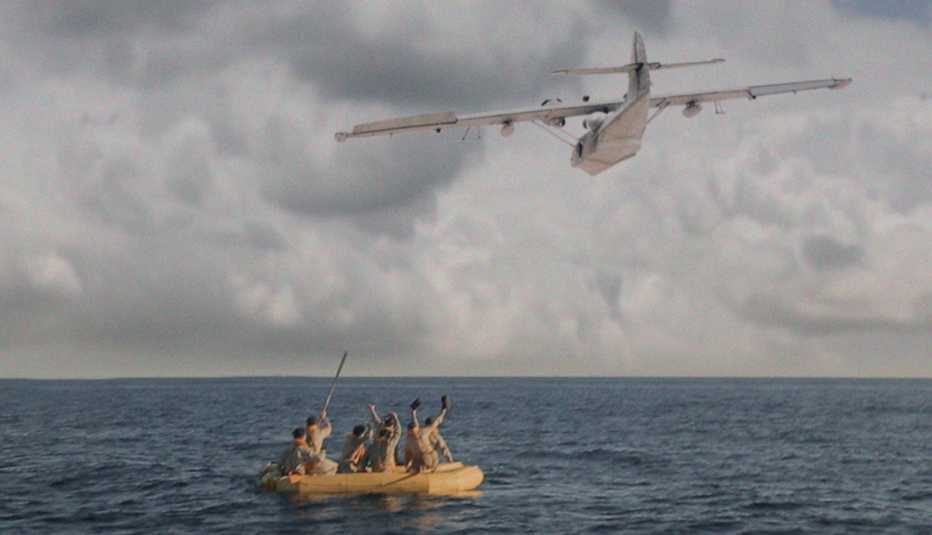Staying Fit


In the waning days of World War II, a B-29 bomber named Dragon Lady by her crew was brought down by Japanese antiaircraft flak and plunged into enemy-controlled South Pacific waters.


You can subscribe here to AARP Veteran Report, a free e-newsletter published twice a month. If you have feedback or a story idea then please contact us here.
One of the airmen had been killed, but eight others carrying a seriously injured gunner were able to clamber out and make it to their inflatable life rafts. The waters were patrolled by Japanese submarines and sharks. The airmen feared they might be left to die.
But help was at hand in the form of the 4th Emergency Rescue Squadron (ERS), based on the island of Iwo Jima, which had been captured by the U.S. Marines two months earlier after a ferocious 36-day assault. There, a PBY Catalina, an amphibious aircraft christened Pistofe, was standing by.
All nine airmen were rescued and lived to survive the war and return home to their families.
Tragically, Lt. Royal Stratton, Pistofe’s pilot, did not make it. Battling to control the aircraft with the extra weight on board and mindful of the threat of Japanese Zero fighter planes, Stratton was unable to prevent Pistofe from hitting a wave. A propeller blade sheared off, ripping through the cockpit and mortally wounding him.


AARP Membership— $12 for your first year when you sign up for Automatic Renewal
Get instant access to members-only products and hundreds of discounts, a free second membership, and a subscription to AARP the Magazine.
Stratton had enlisted in the U.S. Army Air Forces after Pearl Harbor and married in 1943. Four days after the birth of his daughter, Vicki, he had left for war. He was just 22.
Chris Johnson grew up hearing about his great-uncle at annual family reunions in Stratton’s hometown of Ellwood, Pennsylvania. Johnson became a filmmaker and decided to answer the questions he had always had about his great-uncle’s final mission and pay tribute to his comrades from the Greatest Generation.
The result is an emotional docudrama, Journey to Royal, which mixes live action in dramatic scenes using actors spliced with original photographs and first-person interviews.
One of the most moving interviews is with Staff Sgt. John Logan, the last living soldier from the 4th Emergency Rescue Squadron. Logan recalls how Stratton, mortally wounded, was transferred to the submarine U.S.S. Tigrone along with the crews of Pistofe and Dragon Lady.
“Sometime during the night, Stratton had died,” he says, fighting back his emotions. “I don’t see how he lived as long as he did. I felt like I was inadequate, and the sub’s physician, he said, ‘There wasn’t a thing you could do about it.’ He said, ‘If that had happened on the steps of Johns Hopkins Hospital it would all have been the same.’ They buried him at sea the next morning.”
Lt. Walter Sheppard, another 4th ERS pilot, says: “I knew Royal Stratton real well. He was a dear good friend, a really excellent pilot — I can't say enough about his piloting ability — and a fine man.”

































































More From AARP Veteran Report
I Wrote the Guidebook for Vets Joining the Federal Government
A Navy veteran worked out how to navigate the complex USAJOBS.com hiring process, so you don’t have to
Here’s What Veterans Should Do About a Bad Back
Get moving, change your posture — and don’t put off decisionsFinal Rescue Mission for First American Soldier Into Afghanistan
A Green Beret is now trying to save the Afghan allies he fought alongside after 9/116 Canines Who Served With Honor
Faithful best friends in trenches, foxholes, ships, aircraft and POW camps